Wisdom Masters Press
A Discussion of Critical Theory
Preface: In the wake of the November 2021 election results in Virginia and elsewhere, the already astonishing amount of propaganda surrounding the teaching of critical
race theory in U.S. schools began to intensify. After several electoral losses, certain politicians, their operatives in the media and others insisted—and continue to insist—out of ignorance or malice, that critical race theory "doesn't exist," or "isn't real," or that it "is not being taught." Those claims are patently false.
An
anonymous survey (wherein school administrators and teachers could respond honestly without
themselves or the school being identified) conducted by the non-union, non-partisan 'Association of American Educators'
(Oct 2, 2021) found that 11.7% of K-12 public schools are teaching the core tenets of critical race theory, and 4.1% of schools report being mandated or required to teach critical race theory. There are 130,930 K-12 schools
in the U.S., according to the 'National Center for Education Statistics'
(2020), which means that over 15,300 K-12 schools are exposing an estimated 10 million children to critical race theory
ideology. Sources: Association of American Educators, Mission Viejo, CA; National Center for Education Statistics, U.S. Department of Education, Washington, DC.
On November 9th, much to their credit, the liberal paper 'The Washington Post' ran
this story: "Democrats Are Lying About Critical Race Theory,"
writing
that "Virginia’s Loudoun County Public Schools, which were ground zero
in the debate over the role of parents in their kids’ education, paid
$314,000 for critical race theory coaching for its teachers from a
consulting firm that turns critical race theory into school curriculum.
In California, students as young as six are being taught CRT-inspired
lessons in 'white privilege' and claims of 'structural racism.' In New
Hampshire, CRT-based instruction has been part of the school systems
for years," and so on. Similar articles appeared in 'Newsweek', 'The Hill,' and other publications.
And then of course are the accounts from hundreds of parents
who were home
with their kids and eavesdropping via Zoom—observing in disbelief as
they watched teachers trying to indoctrinate students in racialist
concepts, collectively including most or all of the fundamental tenets of critical
race
theory. As 'The Washington Post' wrote, quote: "[T]oday
children are being instructed by teachers trained in CRT to see
everything through the prism of race; to believe that the United States
is a systemically racist country, and to believe that society is
divided into two classes—oppressors and oppressed—and everything you
are is determined by the color of your skin. That is critical race
theory."
The AAE survey specifically noted that
grade 3 through grade 12 classroom teachers in the elementary schools,
middle or junior high schools, and high schools where critical race
theory is being taught
consistently reported, for example: "The critical race theory based curriculum has created suspicion, animosity
and often hatred between black and white children where previously
there was understanding, harmony, and friendship."
So there's the truth. As Winston Churchill said, "The truth is incontrovertible. Malice may attack it, ignorance may deride it, but in the end, there it is."
 Examination of Critical Theory - Background & Analysis, by Jenna Wolfe Ph.D.
Examination of Critical Theory - Background & Analysis, by Jenna Wolfe Ph.D.
•
Welcome. First I wish to thank the scholars who graciously offered so
much assistance in researching this brief discussion of critical
theory, and for insuring its accuracy in presenting a short history and the
psychological elements of its current incarnation. A special thanks to
Yale University, Stanford University, UC Berkeley, UC Los Angeles, MIT, USC,
Magdalene College and King's College in Cambridge, and Oxford
University, along with a number of scientific journals and historical
accounts as appropriately credited below.
•
The ideology of ‘critical theory’ came originally from Karl Marx’s
critiques of industrial society in The Communist Manifesto, 1848, and in a more detailed exposition in his three-volume Das Kapital, circa 1867. In brief, critical theory divides everyone in society into two classes:
The oppressed and the oppressors, and posits that the so-called
oppressed are victimized when they adhere to the civilizational and
cultural norms of their so-called oppressors. Therefore, the cultural
institutions that stand in the way of revolution must be destroyed, and
theoretically that
can be accomplished through relentless criticism, hence the name “critical theory.” The intent and purpose of critical theory is, then, to serve as an instrument to overturn society.
The first 20th century, academic formulation of critical
theory can be traced to a
group of Marxists at the Institute for Social Research (Institut für Sozialforschung)
in Frankfurt (Frankfurt am Main), Germany, 1930-1932. In 1933, the Institute was
moved to the United States where it found hospitality at Columbia
University in New York City. The Institute modeled itself on the Moscow-based Marx-Engels Institute (Институт К. Маркса и Ф Энгельса) in Russia, and established what came to be called the Western Marxist school of thought.
•
Marx's theories were of course fundamental
to the philosophy of the
Bolshevik Party in the 'Russian Soviet Republic' (1917-1918) and its leader Vladimir
Lenin. However, in the Russian Revolution of November 6 and 7, 1917 (or
October 24 and 25 on the Julian calendar, which is why the event is
often referred to as the October Revolution), the role of Marx's
critical theory was minimized, as history was impatient. Poverty was persistent in Russia, to the point of generating a
communist party but not a communist revolution. Marx and his cowriter,
Friedrich Engels, explained why there had been no
revolution, the idea that the workers did not understand their own
interests because the system generated ideas that gave them a false
understanding of the world, thus they must be put through massive “re-education sessions” of critical theory ideology.
The Russia of 1917, which by Marxist theory
was not yet ready for a revolution, was pushed over the edge by Lenin,
who had engineered an expedited solution. The unwillingness of the proletariat to act
in revolt required the Party to act, and the action Lenin undertook, rather than
launch a massive propaganda campaign based on Marx's critical theory,
was to impose a reign of terror to overcome the workers’
noncooperation. The problem the Russians had was that once terror had been widely
applied, it became difficult to end and then entice the workers to flower
into revolutionaries. The terror continued and infamously intensified
under Stalin, and the revolution ultimately led to the establishment of
the future 'Union of Soviet Socialist Republics' (Союз Советских Социалистических Республик) in 1922.
•
The first full, real-world application of critical
theory came in 1933-1934, when Marx's concept of social critique was
adopted by Germany's 'National Socialist German Workers' Party' (Nationalsozialistische Deutsche Arbeiterpartei) and utilized by Joseph Goebbels' Ministry of Propaganda (Propagandaministerium) to critique a specific ethnic group as the “oppressors”
of the German people. Between 1933 and 1945, German youth were
exposed to anti-Semitic critical theory ideology in schools, in
activist organizations (e.g., the Hitler Youth), and through radio, print, and
film. As critical “ethnic”
theory indoctrination developed, it produced what became known as 'The Final Solution to the Jewish Question' (Endlösung der Judenfrage), and formulated the fundamental ideology for the
marginalization, segregation, and later the purge of the Jewish population from
Germany, Austria, Poland and other Central European countries prior to
and during the Second World War. By the end of the war, it is estimated
that between 5,846,000 and 6,274,000 European Jews had been murdered.
Sources: The Rise and Fall of the Third Reich, William L Shirer (1960); Inside the Third Reich, Albert Speer (1982); Goebbels: A Biography, Peter Longerich (2010); Goebbels: Mastermind of the Third Reich, David Irving (1996); The Central European Journal of Social Sciences and Humanities, Prague, Czech Republic (2002); and The Holocaust: A New History, Laurence Rees (2017).
Note:
I wish to extend a special thanks to Laurence Rees, the English
historian. Larry is a BAFTA winning historical documentary filmmaker,
former Head of BBC TV History Programmes, and a British Book Award
winning author of several books about Adolf Hitler and the Nazis. He
graciously provided me with a chilling crash course on the Nazis'
chaotic rule and the role played by Joseph Goebbels' Propagandaministerium.
Though most Ministry of Propaganda files were destroyed
before war's end, several discoveries from intact archives found in the
town of Wurzburg reveal the direct and extensive influence the
theories of Karl Marx played. Far from randomly unleashing terror, the activities of the Gestapo (Geheime Staatspolizei), and the SS (Schutzstaffel)—the military order in charge of executing the Holocaust—revolved directly around Marxist, anti-Semitic critical theory ideology.
•
"Those who can make you believe absurdities can make you commit atrocities." —Voltaire
•
The pressing question at the present time is exactly how a small percentage of Americans
outside of elitist, hard-left academia—a percentage estimated by MIT to be between 0.3% to 0.5% of the U.S. population—have apparently come to genuinely accept the abstract ideology
of critical “race”
theory. Or, in the alternative, why a far larger percentage are
opportunistically utilizing critical race theory to advance political
agendas.
There has been substantial research into this
question and the answers that have emerged are interesting and, we believe, very important to understand. Sources:
Journal of Applied Social Psychology, Hoboken, NJ; American Journal of Political Science, Bloomington, IN; Journal of
Abnormal Psychology, Worcester, MA; Psychological Science in the
Public Interest, Thousand Oaks, CA; British Journal of Political Science, Cambridge, UK; and the British Journal of Psychiatry,
London, UK.
• Historical Background: Originally, the Marxist Left built its
political program on the theory of class conflict. Karl Marx (1818 - 1883) believed that
the primary characteristic of industrial societies was the imbalance of
power between capitalists and workers. The solution to that imbalance,
according to Marx, was revolution: The workers would eventually gain
consciousness of their plight, overthrow
the capitalist oppressors, seize the means of production, and usher in a new socialist society.
During the 20th century, a number of regimes
underwent Marxist-style revolutions, and each ended in disaster.
Socialist governments in the Soviet Union, China, Cambodia, Cuba, and
elsewhere, in the process of imposing and attempting to maintain
socialism, racked up a body count of over 100 million of their own
people [1]. They are remembered for their gulags, show trials, executions,
and mass starvations. In practice, Marx’s ideas unleashed man’s darkest
brutalities.
Historians are unanimous in reporting that,
with the sole exception of war, socialism has been the leading man-made
cause of misery, deprivation and death in all human history,
unsurpassed in the entire dark catalogue of human folly. Socialism has
succeeded only in raising a tiny elite to the pinnacle of wealth and
power while inevitably crushing the populace with poverty, mass
shortages, civil unrest, oppression, and all too often genocide. There
are no exceptions to this in the historical record [2]. Sources:
The Joint Centre for History, Magdalene College and King's College,
Cambridge, UK; Yale University Department of History, New Haven,
CT; University of Oxford History Department, Oxford, UK.
• The Creation of Critical "Race" Theory: By the mid-1960s, Marxists in the West had
begun to acknowledge these failures. They recoiled at revelations of
socialist atrocities and came to realize that workers’ revolutions
would
never occur in Western Europe or the United States, where there were
large middle classes, rapidly improving standards of living, and
historically unprecedented prosperity. Americans in particular had
never developed a sense of class consciousness or class division. Most
Americans believed in the American dream—the realization that they
could achieve great success through education, hard work, and good
citizenship.
Rather than
abandon their
Leftist political project, Marxists simply adapted their revolutionary
theory to the social and racial unrest of the 1960s, which was
favorable to their purpose of tearing down the Western institutions
that stood in the way of revolt and stage a Marxist revolution.
Abandoning Marx’s
economic dialectic of oppressor capitalists and oppressed workers, they
substituted race for class and sought to create a revolutionary
coalition based on racial categories. White patriarchy was
substituted for capitalist oppressors, and people of color, in particular
African-Americans, were substituted for oppressed workers to become the
new, powerless “victims.” Critical
“race”
theory was born.
Fortunately, the early proponents of this
revolutionary coalition in the U.S. lost out in the 1960s to the civil
rights movement, which was the polar opposite of critical race theory.
Rather than seeking to divide the populace based on race and
effectively eliminate individual integrity and equality, the civil rights leaders sought instead the fulfillment of the American promise of freedom
and equality under the law. Americans preferred the idea of improving
their country to that of overthrowing it. The extraordinary vision of Martin Luther
King, Jr., President Johnson’s pursuit of the Great Society, and the
restoration of law and order under President Nixon defined the
post-1960s American political consensus.
• Contemporary Analysis: Detailed studies indicate the re-emergence of critical theory
ideology in recent times has as its causative factors several primary elements, including but not limited to: 1) The growth of elitist
radicalism
in our universities; 2) The polarization of mass media to the far-left with the propagation of false information [3]; 3) The emergence of political parties as ideological
interest-groups; and 4) The
growth of socialism in a major political party, marking the first time
in American history a significant number of members of Congress support
a transition of the United States from a constitutional republic with
leaders elected through a multi-party democratic process, and with an
economy based on a limited form of capitalism, to a system of statism [4]
with leaders chosen from a single-party slate of candidates through an
autocratic process, and with an economy based on socialist policies. NOTE: This is not overstated, nor is it speculation. Recent surveys show three-quarters of Congressional Democrats—74%—have a positive view of socialism, and nearly two-thirds—63%—are
favorable to Marxism, which considers itself to be the purest form of
socialism. By contrast, only one-tenth of American adults—11%—have a favorable view of Marxism, while over three-fourths—79%—have a positive view of capitalism. Sources: Pew Research Center, Washington, DC; Monmouth University Polling Institute, West Long Branch, NJ.
•
The
relationship between political theory as envisioned in the U.S.
Constitution and actualized politics has become lost
in the modern age. There is an increasing, general willingness to do
away with facts in favor of mere opinions and ideologies. The way we
think about the world affects the
relationships we have with others and ourselves. By imagining and
promoting a ‘secret
meaning’ of racism in every institution, event, experience and
encounter, critical race theorists mythologize reality to conform with
their ideology.
Critical race
theorists therefore dispense with facts altogether, which of course only means
that they interject their own “facts” underlying their own statements, all
of which must be accepted as gospel truth. And this means that one can no longer trust the reality
of one’s own factual knowledge of the world. Instead, one is taught to
distrust oneself and others, and to always rely upon the ideology of
the movement, which must be right.
Psychology researchers found that, in order to make individuals susceptible to
critical race theory ideology, you must first undermine their
relationship to the real world and to others by using propaganda designed to make them so skeptical and
cynical that they can no longer rely upon their own judgment. To do this, the
critical race theory movement uses deception to isolate individuals from
reality. Isolate in this context means “to cause a person to be or remain alone or
apart from.” The literature of critical race theory reveals the techniques used:
● Critical
race theory ideology divorces people from the real world of lived experience where one learns to distinguish fact from
fiction, and forecloses the possibility of learning from new
experience or evidence;
● Critical
race theory ideology demands belief in an omnipresent ‘secret reality’ of
racism that is somehow concealed behind the
world of perceptible things and within all events;
● Critical
race theory ideology insists on an entirely revised account of history,
and is concerned with controlling all versions and
records of history;
● Critical race theory ideology relies on methods and procedures of thinking that are divorced from reality.
•
The indoctrination required for critical theory succeeds when
people lose contact with the vast majority of their fellow humans as well as the reality
around them; for together with these contacts, individuals lose the
capacity of both experience and thought. The ideal subject for critical
race theory ideology is not just the convinced Marxist or the convinced
Communist, but people for whom the distinction between fact and fiction— i.e., the reality of experience—and the distinction between true and
false—i.e., the standards of thought—no longer exist.
This erasing of the line between fact and
fantasy is dangerous. One of the more publicized of the critical race theory
propagandists, Robin DiAngelo, writes that “Students
who are taught that an equilateral triangle has three angles of 60
degrees each are not doing Euclidean geometry, they're being
indoctrinated in white supremacist culture.”
This kind
of bizarre distortion of reality is ignorant and unforgivable. The laws
of physics that govern everything in the universe are founded on the
universal language of mathematics and geometry. Moreover, mathematical
equations, numbers and geometric patterns are present everywhere. In,
say, South Africa or Nigeria, an equilateral triangle still has three
angles of 60 degrees each. Also on the moon, Mars and in every distant
galaxy, none of which are known hotbeds of "white supremacist culture."
Organized critical race theory, then, bred from myth and
ideology, leads to tyrannical thought, destroys a person’s ability
to make accurate, factually
based judgments, and inclines them to delusions [5]. Ideological thinking turns individuals away from the
real world, starves their imagination, denies plurality, and destroys
the relationships between people that allows them to relate to one
another in meaningful ways. And once ideological thinking has taken
root, reality no longer bears upon thinking. Instead,
reality is forced to conform to ideology in thinking.
• But life is messy. Amid the chaos and
uncertainty of human existence, we need a sense of place and meaning.
We need roots. And ideologies, like the Sirens in Homer’s Odyssey,
appeal to us. But those who succumb to the siren song of ideological
thinking must turn away from the world of truth, of facts and reality.
In doing
so, they cannot confront themselves in thinking because, if they do,
they risk undermining the ideological beliefs that have given them a
sense of purpose and place. Put very simply, people who subscribe to
critical race theory have been rendered incapable of thinking
for
themselves. And it is this inability to accurately view
reality, to
separate fact from fiction, that tragically marks the critical race
theorists.
•
The real-world application of critical theory
in today's America, while not responsible for such an incomprehensibly
horrific toll of human life as in 1940s Europe, has nevertheless manifested in numerous destructive societal consequences. Marx's ideology
of social critique, in its contemporary adaptation as critical “race" theory, includes the claim of the existence of “systemic racism” in the United States, and the claim that the U.S. is a “racist country.”
Such irrational concepts are not necessarily harmless. Unlike other baseless conspiracy theories—most of which are innocuous, such as a “faked” moon landing, a “missile” hit the Pentagon on 9/11, or the Earth is actually “flat”—a belief in universal, institutionalized racism has proven
dangerous to people, property, and civilization in general.
It was one primary motivator for 574 violent
riots in 140 U.S. cities during the summer of 2020, which included
murders, assaults, arson, mass looting, attacks on government
buildings, wanton destruction of thousands of businesses, devastation
of national monuments, war memorials, churches, even statutes of
religious and cultural icons, and resulted in more than 35 violent
deaths, over 2000 police officers injured, 14,000 arrests, and an
estimated 2.3 billion dollars in property damage. This kind of
widespread sociopathic behavior is no small matter. Sources: Journal of Theory, Culture & Society, Thousand Oaks, CA; Journal of Personality and
Social Psychology, New York, NY; Federal Bureau of Investigation, Crime Statistics Division, Washington DC.
•
By design, in this discussion I touched only lightly upon
the complex depravity
of critical theory based on class or ethnicity or race, or its very
dark and lethal history, or the
perverse
motives of its advocates, nor did I do justice to the grave danger
of its resurrection, because an important thing I learned about
Marxism
and critical race theory is that it's not a popular or well-accepted
movement, and that the
will to resist is on the rise. A new poll shows 78% of American adults
are "very concerned" or "extremely concerned" about critical race
theory being forced on school children, employees of companies and
corporations, government employees, and members of the military. The
stubbornness of the
human soul in
its pursuit of good over evil transcends a horribly failed political
theory and the intent of its proponents to impose racist policies
designed to divide people and instigate societal upheaval.
NOTES: •
1. The reference
to the oppression and eventual genocide inevitable under socialism
deserves elucidation. Under the most modest historical estimates, the
number of deaths under socialism exceeds 100 million people, the bloody
legacy that occurs after people rise up against the results of
socialist “equity” and “common good” policies. In imposing and
maintaining socialism, the Soviet Union murdered approximately 61.9
million people. More than 38.7 million people were murdered in the
Socialist People’s Republic of China. The Socialist Republic of Vietnam
murdered more than 1.7 million people. Under Cambodia’s Khmer Rouge
socialist regime, 2.2 million people were killed. In Africa, socialist
regimes have killed more than 1.8 million people, and over 2 million
were killed in the Eastern Europe socialist regimes. Current estimates
record about 160,000 people killed in Latin America under socialist
regimes, and that number continues to rise. (Estimates do not include
war deaths or deaths resulting from starvation.) See, e.g., Death by Government, Transaction Publishing (1994); Socialism, Terror & Repression, Harvard University Press (1997); The State After Statism, Cambridge University Press (2006); Socialism, The True Totalitarianism, Oxford Press (2011); et alia.
2 (by Ella). The
U.S. press and many U.S. politicians characterize Sweden and other
Scandinavian countries as being "socialist." They are certainly not,
and given the momentous efforts and sacrifices that have been made
throughout the struggles of modern history to defeat socialism and
restore devastated countries to freedom, health, and prosperity, I do
not understand how such people are oblivious to how insulting their
characterizations are to the people of the Nordic countries. I was born
in Sweden (my father is British and my mother Swedish), I grew up
there, I was educated there, and I can tell you that it is certainly
true that Sweden, Norway, Finland, and Denmark are notable economic
successes. What is absolutely false is that any of these countries are
socialist. That claim is absurd, and those who spread the myth of
Nordic socialism do it by intentionally deceiving people about the
difference between socialism and conventional government-provided
social safety net programs. The Nordic countries practice entirely
capitalist, free-market economics paired with relatively generous
government entitlement programs. The Nordic countries’ commitment to
their free-market economies can be found, to cite just a few examples,
in their absence of minimum wage laws, in their school choice programs
(including for-profit private schools, two of which I attended), in
their entirely capitalist business structures, in their low corporate
taxes, in their absence of property or inheritance taxes, and in their
minimum of government control over businesses. These policies, among
many others, are all the exact opposite of socialism.
3. In discussions with several professors from U.C. Berkeley's Graduate School of Journalism, I was told: "A
large part of the mainstream media has essentially become an extension
of the professional left. They use distortion, fabrication and
emotional manipulation as political tools, and right now those are
being employed to create and impose the impression that systemic- and
institutionalized-racism are widespread in this country. Yet every
blue-ribbon commission and objective academic study over the last
decade has concluded that actual racism is very rare in the U.S. The
vast majority of Americans are simply not racist, far less is any sort
of racism systemic. The idea that structural racism exists in a society
that is so little racist is patently
false, yet the CRT extremists insist that our society is so much racist
that every part of it is soaked with racism. We've expected to believe and live with the
paradox of a racist society without racists, yet the absurdity of that
is ignored by the media."
4. Statism, the essential component of any form
of socialism, is a political system in which the state has centralized
control over a country’s industries, energy sector, agriculture,
transportation, utilities, telecommunication, election systems,
financial institutions, educational systems, courts, military, and all
social and economic affairs. Put another way, statism is the imposition
of complete control of a country and its society by a small, elite
group who rule over every aspect of every citizen’s life. Oxford English Dictionary, 2nd Edition (1986); International Encyclopedia of Political Science, London (2011).
5. An Oxford political science professor with whom I consulted had an interesting observation:
“In
the U.K. and the U.S., with each passing month the critical race
theorists’ agenda becomes more chimerical, more illusory, more
irreconcilable with a free society, and more unpopular. While truly
serious educational issues are ignored, they continue to promote absurd
constructs of ubiquitous racism, fabricated history, and of course
Marxist critical theory. Such ridiculous concepts, now as in the past,
can only be imposed by force, and that engenders resistance. The
growing public resistance angers them, and they process their anger
through all sorts of channels, from vitriol to pure acrimony to an
increasingly entrenched set of delusions. It is well-established that
delusional disorders can result in psychoses and if unmediated to
episodes of violence.”
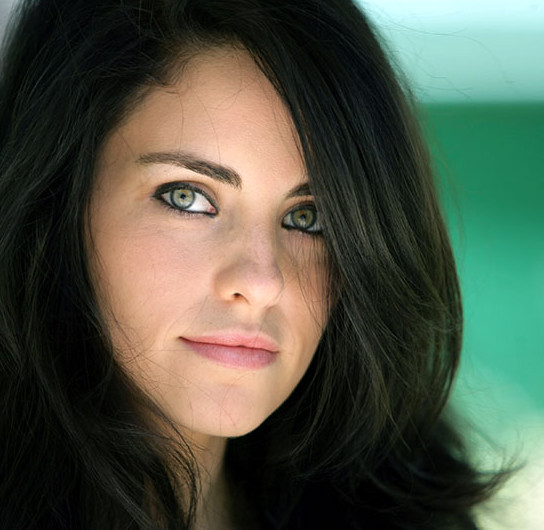 Specific Traits of Critical Race Theory, by Heather: How
is critical race theory distinct from other extreme ideologies? The
notoriously slippery ideology of critical race theory contains many
traits which can be found in any radical ideology. However,
philosophers, sociologists and psychologists say several traits offer
insights with respect to the distinct, specific characteristics of critical race theory.
Specific Traits of Critical Race Theory, by Heather: How
is critical race theory distinct from other extreme ideologies? The
notoriously slippery ideology of critical race theory contains many
traits which can be found in any radical ideology. However,
philosophers, sociologists and psychologists say several traits offer
insights with respect to the distinct, specific characteristics of critical race theory.
• A Mythic Past: CRT promoters have created a mythical past to support their ideology. While often
based on some easily distorted events in history, it needn’t be based
on any real history or historical event at all. It frequently relies on
largely or entirely fabricated interpretations of history, which can lead to fictionalized accounts
like "The 1619
Project."
Dozens of leading historians, even many on the left, have
thoroughly debunked the 1619 Project, calling it "bad history based on
bad motives."
"You either understand history or you believe the 1619 Project; you
can't do both," and, "The project is so wrong in so many ways," according to
Pulitzer Prize winning historian Gordon Wood. And James McPherson, the
dean of Civil War historians and a Pulitzer Prize winner himself,
remarked that the project presents an "unbalanced, one-sided account"
that "leaves history out."
Leslie Harris, African-American professor of
history at Northwestern University and The New York Times’ own
fact-checker for the 1619 Project, warned that it presents "grossly inaccurate depictions of events for which we have a clear understanding," and that there is "no foundation
for the claim that the American Revolution was undertaken to protect
the institution of slavery," and that it contained numerous other
serious inaccuracies. "Far from being fought to preserve slavery, the
Revolutionary War became a primary disrupter of slavery in the North
American colonies."
"The 1619 Project is disfigured by unfounded
conjectures and patently false assertions," wrote 21 scholars in a
letter to The New York Times, including Hillsdale College President
Larry Arnn, Hoover Institution Fellow Victor Davis Hanson, Claremont
McKenna College professor Charles Kesler, and National Association of
Scholars President Peter Wood.
An additional group of highly distinguished historians critiqued the 1619 Project: "As
historians and students of the Founding and the Civil War era, our
concern is that 'The 1619 Project' offers a historically-inaccurate
view of slavery, especially since slavery was not just (or even
exclusively) an American malady, and grew up in a larger context of
slavery through thousands of years of human history... The 1619
Project asserts that every aspect of American life has only one lens
for viewing, that of slavery and its fall-out. The idea that creating
enough hatred for the nation’s founding, its ideals, and for America’s
majority group will result in justice and harmony somehow emerging is
irresponsible and reprehensible."
Signatories to this critique included:
Allen C. Guelzo, Senior Research Scholar, Princeton University;
Steven B. Smith, Alfred Cowles Professor of Political Science, Yale
University; Michael P. Zuckert, N. Reeves Dreux Professor of
Political Science, University of Notre Dame; William B. Allen,
Emeritus Dean and Professor, Michigan State University; Michael
A. Burlingame, Naomi B. Lynn Distinguished Chair in Lincoln Studies,
University of Illinois; Joseph R. Fornieri, Professor of
Political Science, Rochester Institute of Technology; Peter
Kolchin, Henry Clay Reed Professor Emeritus of History, University of
Delaware; Glenn W. LaFantasie, Frockt Family Professor of Civil
War History and Director of the Institute for Civil War Studies,
Western Kentucky University; Lucas E. Morel, Professor of
Politics, Washington & Lee University; George C. Rable,
Professor Emeritus, University of Alabama; Diana J. Schaub,
Professor of Political Science, Loyola University; Colleen A.
Sheehan, Professor of Political Science and Director, The Matthew J.
Ryan Center, Villanova University.
Denial of Marxist Origin:
This is a lie spread by those who know it to be a lie, and then
repeated by the gullible (whom the Kremlin used to affectionally call
“useful idiots”). All of the primary critical race theory proponents
are avowedly Marxist, an admission openly and consistently made
by Patrisse Cullors, Alicia Garza, Angela Harris, Richard
Delgado and others. (E.g., Patrisse Cullors said this in a national
interview: "We are trained organizers. We are trained Marxists.")
Critical race theory came straight out of the critical theory of the
Frankfurt School, which was the first and most important of the Western
Marxist schools and which (along with Antonio Gramsci) replaced Karl
Marx’s economic determinism with the view that a racial superstructure
(or hegemony) was what dictated people's thoughts, attitudes, actions
or non-actions.
• Propaganda:
While many political ideologies use propaganda, critical race theorists
lean on it extensively to establish a sense of "us and them," and to
frame the members of the "them" group as an existential threat to
members of the "us" group.
• Anti-Intellectualism:
The "them" group typically includes scholars, intellectuals, historians and
other sources of expertise that debunk their mythology and
disprove their claims. Beyond intellectuals in the humanities
and history, leading figures in any of the sciences can also be targeted
if they go against what critical race theory ideology claims to be true or not true.
Fascinating examples of this are the claims by
critical race theorists that "objectivity" and "individualism" are
elements of "white supremacy," that "punctuality" and "hard work"
represent "white ideas," and that the foundational idea of science that
a theory can be proven or disproven by the empirical process of the
scientific method is a "white supremacist" argument. And we are told
that teaching children the fact that an arithmetic calculation has only
one correct answer—for example that 2 + 2 = 4 or 10 - 7 = 3—is only a
vestige of "white-supremacy culture." We are not told what other
correct answers to the calculation 2 + 2 may be. Of course. Which quite
nicely leads us to the next trait.
• Unreality:
Critical race theorists tend to ignore realities that contradict them
and define truth as whatever the ideology declares it to be, no matter how fantastical. This can
make propaganda more effective because it allows them to get their
followers to ignore problems and contradictions that might derail a more reality-based
movement.
• Hierarchy:
Pretty much any ideological movement will establish a hierarchy of
humanity with a particular group—in this case defined by race—on the top
and with everybody else below. Equality is denied and the value of the
allegedly better group will be relentlessly repeated for all to hear.
• Victimhood:
Despite the claims of superiority, critical race theorists also claim
their group has been systematically victimized by others—say, by the health care
system or the educational system—and that bold action is needed to
right
these “wrongs” and restore balance and fairness. This also tends to
make actual equality look like discrimination against a group that isn’t being
discriminated against.
•Rejection of Democracy:
Critical race theorists generally reject the representative kind of government
where elections are free and competitive, powers between different
government branches are separated, and people have equal
rights, freedoms and protections under the law, preferring an
authoritarian system as exemplified by the Marxist socialist model in
particular. (This is an important subject. For more information on how serious it is, please see the notes below.)
• Cultism:
A consistent observation is that critical race theory has assumed the
characteristics of a secular religion or cult. When asked about this comparison, a
UC Berkeley sociologist explained, "I think that's accurate in that
critical race theory has developed as a rigidly revolutionist belief
structure.
Those at the forefront of the movement, who
wholeheartedly embrace an oppression/victimization worldview derived
from Marxist critical theory, see it as a sacred calling to breakdown
institutions and social structures. This is very much in line with the
militant religions of al-Qa’ida and Boko Haram.
"Whereas traditional religion values and promotes love, goodness,
harmony, respect, acceptance, equality, family and a sense of community and
fulfillment, critical
race theorists reject all of those values. They do not merely look at
racial questions. They
promote a culture of
victimhood, intolerance, tribalism, discrimination, and a deliberately
confused mental state in their adherents. Like all zealots, they give
dogmatic answers, they
preach a doctrine, seek converts, and condemn nonbelievers. Anyone who
questions their worldview or convictions is excoriated as a racist or a
white supremacist. When these elements are present, when a belief
system goes-to-the-dark-side, we stop using the term
religion and start using the correct term—cult."
• Reliance on Psychological Manipulation - Illusory Pattern Perception & Conspiracy Theory:
Considering these traits, it is entirely natural to wonder how critical race theory can find any adherents
at all, aside from those devoted to a specific political narrative.
However, to be fair, not every politician, school board member, teacher, or whoever, that you see supporting critical race theory is
doing so purely out of a racist motive, authoritarian impulse, or as
part of a political agenda. Many of them have simply been deceived and
duped by what a Berkeley psychology professor described as, quote, "An
extraordinary propaganda campaign directed at the young, the
uninformed, the mentally unstable, and the naïve, utilizing powerful psychological techniques of
manipulation."
Of course, this makes separating the honestly conned and deluded from
the knowing liars somewhat difficult, and in any case that may be
neither productive nor necessary.
The world can be an unpredictable place, and that makes our brains work
overtime. As a predictive organ, the brain is on a constant lookout
for patterns that explain the world, help you thrive in it, and
protect you from possible threats. This ability helps humans navigate
and make sense of the world. However, this brain activity can be a double-edged sword.
As scientists report in a peer-reviewed
paper published in the European Journal of Social Psychology, sometimes
people perceive a pattern even where there is no
pattern to recognize—a pattern created by their brain on its own. This
phenomenon, called Illusory Pattern Perception, is what
drives people who believe in conspiracy theories, which can be broadly
defined as unfounded, unscientific, and illogical assumptions about the
world. Credit: European Journal of Social Psychology, 48, Amsterdam, The Netherlands (2018).
Relevant examples of contemporary conspiracy theories include
the idea that the United States harbors overall "systemic racism," the
idea that the U.S. is a "racist country,"
and even that the founding documents of The Declaration of
Independence, The U.S. Constitution, and The Bill of Rights are based
on "white supremacism." Studies indicate
that belief in nonsensical conspiracy theories predicts maladaptive
perceptions and
behaviors such as decreased civic virtue, disregard for law, hostility,
radicalization,
and violence. (Credits, e.g.: Stephan, Craig, Gregory, 1999; Goertzel, 1994; Jolley, Douglas, 2014; Chamorro-Premuzic, Furnham, 2010; van Prooijen, Krouwel, Pollet, 2015.)
These studies are especially important—a significant number of non-pathological Americans believe in
such conspiracy theories. Illusory pattern perception—the act of seeing
patterns that aren’t there—has been linked to belief in conspiracy
theories before, but that assumption had not been fully supported with
empirical evidence. By systematically testing this assumption, the scientists behind the new
study are some of the first to show that this explanation is, in fact,
correct.
The researchers came to this conclusion after
conducting five studies involving over 1800 American adults. The research focused
on the relationship between irrational beliefs and illusory pattern
perception. Initial studies revealed that the compulsion to find
patterns in an observable situation was in fact correlated with
irrational beliefs. People who saw patterns in random coin tosses and
chaotic, abstract paintings were more likely to believe in
conspiratorial theories.
The study showed how susceptible people can be
to external influences. Media reporting and political speeches about conspiracy theory
beliefs such as systemic racism, the researchers report, caused "an
increase in the perception of patterns in coin tosses, paintings and
life," and that constantly hearing about one conspiracy theory made
people more likely to believe in another one. "Following a manipulation
of belief in one false conspiracy theory people saw events in the world
as more strongly casually connected, which in turn predicted unrelated
irrational beliefs," write the authors.
The researchers suggest that irrational
beliefs are born from pattern perception because of the "automatic
tendency to identify meaningful relationships between stimuli."
Distortions in this process can happen, and the brain can connect dots
that are actually nonexistent. People are bad at judging what’s random
and fail to see that, often times, patterns are actually coincidences,
which leads to irrational connections between unrelated stimuli. For
example, just because societal power is dominated by the rich does not
mean those rich people are Illuminati, though that is a thing that many
people believe.
Fortunately, scientists have found a way to
block the pervasiveness of illusory pattern perception: Critical
Thinking. The psychologists explain that critical thinking is
something that can be learned, and if people are trained in the right
way, false beliefs and false conspiracies can be combated with logic
and reasoning. "We humans are naturally disposed to see causal
connections between events, even when they aren’t there. The brain may
try to make false connections, but that doesn’t mean you have to
believe it." Because critical thinking is a skill—not something people
are necessarily born with—the existence of irrational ideologies such
as critical race theory is "mostly on us and the education these adults
did or did not receive."
Here's a disheartening statistic. According to
a recent study, "36 percent of college students don’t significantly
improve in critical thinking during their four-year tenure. These
students had trouble distinguishing fact from opinion, and cause from
correlation," the researchers explained, and went on to offer some
advice: "Take more math and
science than is required. And take it seriously." Why? Because, "There
is no better tool than quantitative thinking to process the quantity of
information that is thrown at us every day."
"In an age
of extensive agenda-driven media propaganda and the
rapid spread of disinformation, false beliefs are propagating more
than ever before, and we have a way to stop them, but it is
up to each individual to utilize an intellectually disciplined process
of actively and skillfully researching, analyzing, and evaluating
information gathered from, or generated by, observation, experience,
reflection and reasoning as a guide to belief and action."
NOTES: Regarding
rejection of democracy, a retired Federal Circuit Court judge, a
neighbor of ours, told me, "You don't know the half of it," and arranged for me to speak to one of his contacts in the FBI, a
counterterrorism specialist. She agreed to trade candor for
confidentiality, and explained as follows, quote:
"The rise in far-left extremism is the most
threatening we've seen in decades, really since the 60s. My biggest
concern is ...
in the FBI we were treating it as if it was somehow the same as foreign
terrorism, but now we know it’s not, it’s different and it's
more dangerous. To give you a sense of it, we've
traced organizational planning and funding to inject critical race
theory into U.S. schools to sources in foreign states such as Iran,
China, Russia, and North Korea. We
have over 30 investigations underway and a new investigation is on
average being opened every 22 days. Federal law prohibits contributions,
donations, expenditures and disbursements received or made directly or
indirectly by or from foreign nationals in connection with any
election—federal, state or local as with a school board—yet enforcement is difficult as money
is funneled through non-profit organizations, political action
committees, labor
unions, Washington DC law firms, and socialist parties such as the Socialist Party USA, which
the Justice Department currently considers to be off-limits to investigation. I suppose there are sincere
believers in critical theory as part of a social justice agenda, but they don't realize there are people with an
entirely different agenda, elements of organizations who have made them useful pawns in a much larger geopolitical game.
"Our intel shows their intent is to undermine
the country's social stability and political structure by provoking
racial and cultural conflict. Communication intercepts are clear, the
strategy is to use indoctrination propaganda to suppress law-enforcement and subvert support for government by
using violence and racial division ...
to eventually overturn our democracy. That sounds incredibly ambitious,
I know, but it is not historically unprecedented, just look at what
happened in Venezuela. That country was once the most wealthy and most
successful in South America and now it's an authoritarian hellscape. More than 4.6
million people have fled the country, mostly to other Latin American
countries, and many are now coming here.
"Several U.S. organizations are prime movers behind
that agenda and its critical race theory component. BLM for example. One of its founders [Patrisse Cullors]
specifically stated in an interview: ‘We have an ideological frame.
Myself and Alicia [Alicia Garza] in particular, we're trained
organizers. We are trained Marxists.’
It's obvious what their goals are. When we're talking about these
organizations, we're talking about groups who haven't really created
much societal damage until recently. That's changing, and rapidly, just
look at what happened over the summer of 2020. They've been violent and
culturally destructive. If this continues, the challenge we'll be
facing is
literally civilizational."
"Reading the conjectures of critical race theory and thinking they're real
is the equivalent of watching Finding Nemo and thinking it’s a documentary."
 The Deadliest Propaganda, by Kimberly:
When the month of September comes around, we remember a somber day, September 11, 2001, when radical Islamic
terrorists attacked the U.S. in horrific acts of evil that slaughtered
thousands of innocent American citizens, a result of the terrorist's
primitive hatred and truly barbaric ideology.
The Deadliest Propaganda, by Kimberly:
When the month of September comes around, we remember a somber day, September 11, 2001, when radical Islamic
terrorists attacked the U.S. in horrific acts of evil that slaughtered
thousands of innocent American citizens, a result of the terrorist's
primitive hatred and truly barbaric ideology.
• These
are reminders that at every step history teaches us how fragile and
superficial a structure civilization is, and how precariously it is
poised upon the apex of a never extinct volcano of suppressed
barbarism, superstition, ignorance and hate. Modern civilization is a
thin veneer superimposed upon the Dark Ages, which always remain.
• Thankfully,
progress is being made to inhibit the spread of a morally horrific and
immensely destructive ideology in
our own country. This ideology teaches children that “the single most important thing about each person is their race,” since “that determines if you are minoritized and oppressed or are privileged and an oppressor.” Many states have very wisely passed
laws to halt the indoctrination of school children in this hateful
doctrine of “critical-race-theory.”
A University of California, Los Angeles (UCLA)
study tracked legislation, executive orders, state attorney orders, and
local school board orders, and found that between Jan. 1, 2021 and Dec.
31, 2022, federal, state, and local government officials introduced 563
anti-CRT measures. In every state except Delaware, at least one
anti-CRT measure has been introduced. At least twenty-eight (28) states
have taken some kind of statewide anti-CRT action, and at least sixteen
(16) states have legislatively enacted anti-CRT laws. More than
fourteen (14) other states are in that
process, and several more states are working on drafting legislation. This ongoing
process faces several challenges, one of which is crafting a legal
definition of the extreme-left Marxist ideology of “critical-race-theory”
in a way that prevents laws from being circumvented by radicalized
and/or racist teachers or school board members while retaining the ability to teach
actual history truthfully and in detail.
• Legislators
and parents across the country are banding together to enact policy to
fully eliminate “critical-race-theory” in schools, to educate parents
on how profoundly important it is to closely monitor what their children are being taught, to know exactly who they are voting
for when electing school board members, to realize there are people seeking those positions specifically to divide us based on race to tear
down our country, and to realize that
even individuals or small groups can cause devastating, long-term
societal damage.
• There
are ideologies in this world which are wholly destructive, yet through
the relentless utilization of fraudulent narratives manage to persist.
Fortunately, all but a small number of Americans quickly recognize
“critical-race-theory” as the kind of revolutionist-fringe, identity-politics
narrative that's frighteningly racist in its own right. Yet given the
diversity of human character and mental soundness, for any such immoral
and destabilizing ideology there will always be some fraction of humans
who will choose to follow its dogma, people motivated by blind
devotion, or a nihilistic destructiveness, or a revenge for perceived
injustices, because of psychological delusions, or some combination thereof.
• The
obvious existence of these people—who psychiatrists call “the
devastative residual”—means that if any sufficiently powerful tool or
position of control becomes available to them it carries a certainty
such that the inevitable default outcome is moral decay, cultural
division, elimination of personal liberty and equality, and slow-motion societal
destruction. The ideology of “critical-race-theory”
is so dangerous the threat it poses to our country is literally
civilizational, and that, of course, is the plan.
Michael reviewed the foregoing and wrote something which I'm including here:
• There are those who are benevolent and life-giving; they are the ones
who create and inspire, who build and better the world. Then there are
those who are malevolent and life-annihilating; they are the ones who
divide and destroy, who tear down and devastate the world. Critical
race theory is a product of the latter. This is important to
understand. The division, destruction and destabilization of
civilization imposed by critical race theory must not be observed with
detachment—it is extremely dangerous for the future of this or any
country. We are wise to remember a prophesy credited to Abraham Lincoln.
"America will never be destroyed from without. If we falter and lose our freedoms,
it will be because we allowed ourselves to be destroyed from within."
"Education can be used as a weapon whose effects depend on who holds it in his hands and at whom it is aimed."
—Joseph Stalin
Protecting Our Children, by Kimberly: A Stanford public policy expert told me:
"What
the people teaching critical race theory are doing is so
deadly they make the Manson family look like the Brady
Bunch. At the same time they express 'great concern' about children,
complaining about increasing racial divisions, racial
hostilities,
violence, skyrocketing suicide rates and drug abuse. That's like an arsonist
complaining about noise
from fire truck sirens."
Why is this important? There is an astonishing amount of propaganda surrounding the teaching of critical-race-theory in U.S. schools, with certain politicians, media commentators and others insisting that critical race theory "doesn't exist," or "isn't real," or that it "is not being taught." Those claims are patently false. A
survey by the non-union, non-partisan 'Association of American Educators' found that 11.7% of K-12 public schools are teaching the core tenets of critical-race-theory, and 4.1% of schools report being mandated or required to teach critical-race-theory
at the time of the study (Oct 2, 2021). There are 130,930 K-12 schools
in the U.S., according to the 'National Center for Education Statistics'
(2020), which means that over 15,300 K-12 schools are exposing
children to critical-race-theory ideology.
Why is critical-race-theory so "deadly"? Critical-race-theory
teaches children that the most important thing about a person is their
race, designating it as the single most significant aspect of a person
as an
individual, with the goal of categorizing children into immutable and
hostile racial groups. It divides people into those who are
“minoritized” and
"oppressed" and those who are “privileged” and “oppressors,” advancing
an ideology that, by default, means that all interactions between
people are derived from racism, and that our nation is built on racism.
All inequities are ascribed to racism, ignoring individual differences
in innate ability or effort, and the color of one’s skin defines
whether they
are racist, not their character or beliefs or actions.
So what
are parents to do? There are several options. One vital possibility is
to consider running for or at least being involved in your local school
board. School boards play the pivotal role as they are responsible for
making sure K-12 students receive an accurate, non-agenda-driven
education. Sadly, school boards in districts overseeing some 15,300
schools are currently using school curriculum as social engineering
tools.
One origin of this dilemma is the existence of
organizations on the far-left which are well-organized and well-funded
in terms of enlisting and backing school board candidates who will
support indoctrinating students in critical theory, with the long-term
goal of facilitating a transition of the United States to socialism.
This is a
very serious problem. I understand that the FBI currently has over 30
active investigations into funding originating from countries such as
China, Russian, Iran and North Korea.
Running
for a school board position may seem like a big step, but if the
idea appeals to you, there are a number of outstanding
educational organizations that offer courses such as the 'School Board Campaign Training
Program' to help candidates prepare for and win those often-overlooked
yet extremely
important elected positions. In the alternative, getting involved in
efforts to recall radicalized school board members by initiating and
obtaining signatures on petitions, organizing recall elections,
supporting rational candidates and so on, are all very valuable
contributions to protecting children.
As more and more parents
awaken to the growing threat to their children, Pew Research reports that
over the last two months an estimated 227,000 families have simply
moved to a state where
schools are responsibly administered and maintain an honest and
accurate
curriculum. And Bellwether Education Partners reports that parents have
switched about 2.6 million kids from government public schools to
homeschooling, often in cooperative neighborhood endeavors. But not all families can
just up and move, and not all parents are able to devote the time and
effort necessary for homeschooling.
Private schools can offer an outstanding option.
Students attend
private schools for many reasons. Since private institutions rely on
top-quality education and teachers to attract their clientèle, students
are far better educated, more
academically challenged, exposed to meaningful value systems, given
greater access to teachers, and many students simply feel safer.
And
most importantly, private schools are typically run by responsible, professional educators
who teach factual curricula rather than the rabid ideologues who
occupy the school boards in certain districts, those who impose a
curriculum that includes maliciously fraudulent and wholly debunked revisionisms
of history like the "1619 Project" and "critical-race-theory." Younger students, who
are the primary target for indoctrination, are vulnerable to such propaganda. Few
things are more destructive to the future of our country. Preventing a young
child from being exposed to such morally horrific and intellectually
imbecilic falsehoods is one of the greatest gifts a parent can provide.
But private
schools cost money. Private elementary school tuition can range from
$2,551 to $15,598 annually, and private high school tuition can range from
$5,295 to $31,413, according to Private School Review. While private
school is expensive, paying for it is possible no matter your income.
Here are some options:
• Private School Scholarships - Scholarships are a great way to help cover
tuition, but keep in mind competition is typically high. Every
scholarship also has its own application requirements and deadlines.
The Jack Kent Cooke Foundation provides scholarships for children
beginning in 7th grade, all the way through college. Scholarships are
awarded based on academic performance and financial need. The AAA
Scholarship Foundation offers private school tuition assistance for
low-income children or those with disabilities. For other sources of
tuition assistance, check with your state department of education to
find scholarships specific to your area.
• Financial Aid - 25% of students attending private school for the
2018-2019 school year received some type of financial aid, with $17,727
being the median amount of aid awarded. Though you may qualify for
financial aid based on your income, not all private schools will have
enough funds to help every student. Check with specific schools to see
if financial aid is offered, and make sure to note application
requirements and deadlines.
• Tax-deferred Savings Plan - Paying for private school K-12 tuition can
be simplified with a 529 plan. This is a type of tax-deferred education
savings plan that you can use for qualified tuition expenses, even
including college tuition. In addition to federal tax exemption, some
states also offer a full or partial tax credit when withdrawing funds
from the plan.
• Fundraising
- Don't count this out before investigating. Crowdfunding can be a
viable way to
raise money for tuition, and you can include your child or teen in
fundraising efforts. Your child will learn valuable skills they
can use later on through the experience of starting and promoting a
fundraiser, which are applicable to all kinds of philanthropic causes.
With the popular GiveSendGo, for example, there are
no wait times to receive your funds, and a 0% platform fee means that
every dollar you raise goes toward your child’s education.
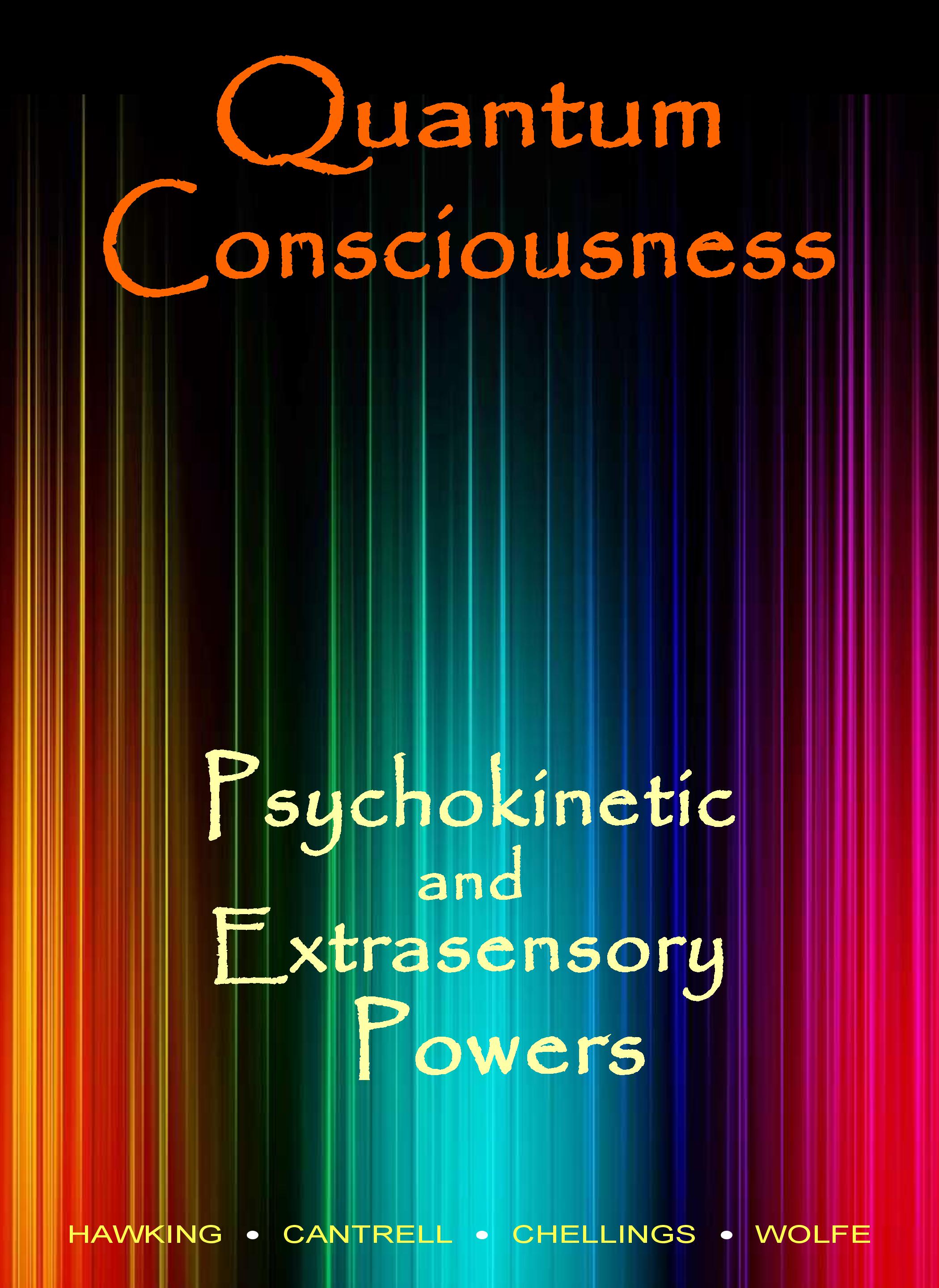
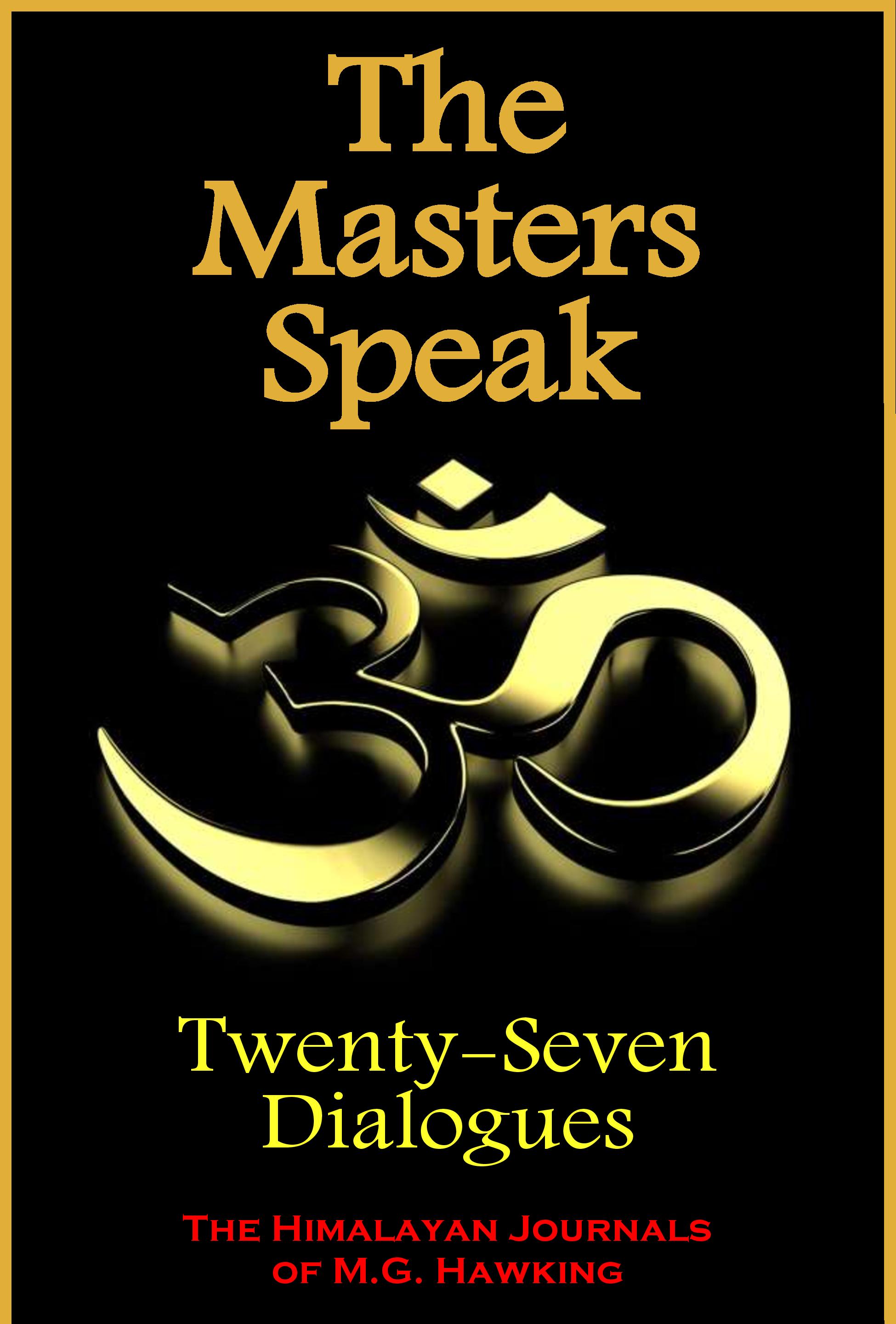
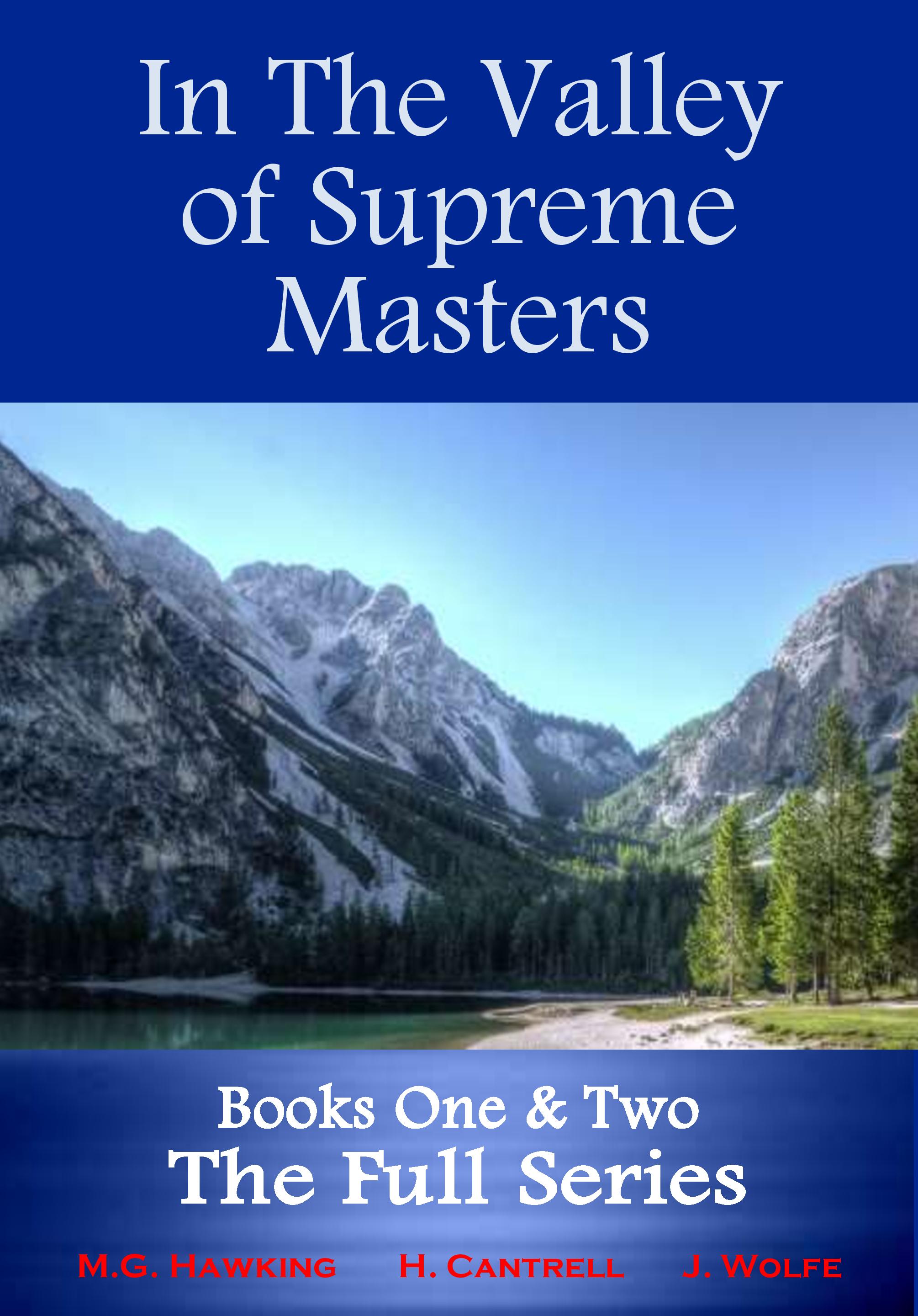
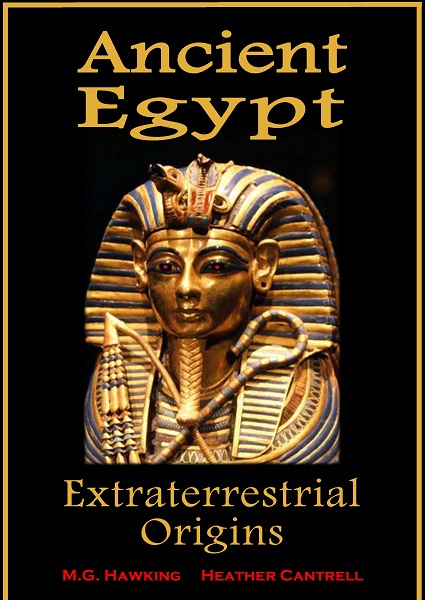
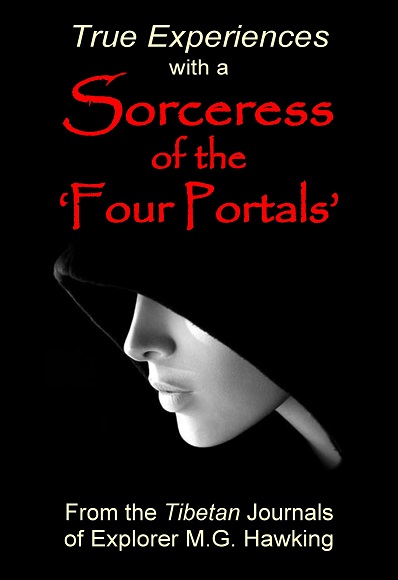
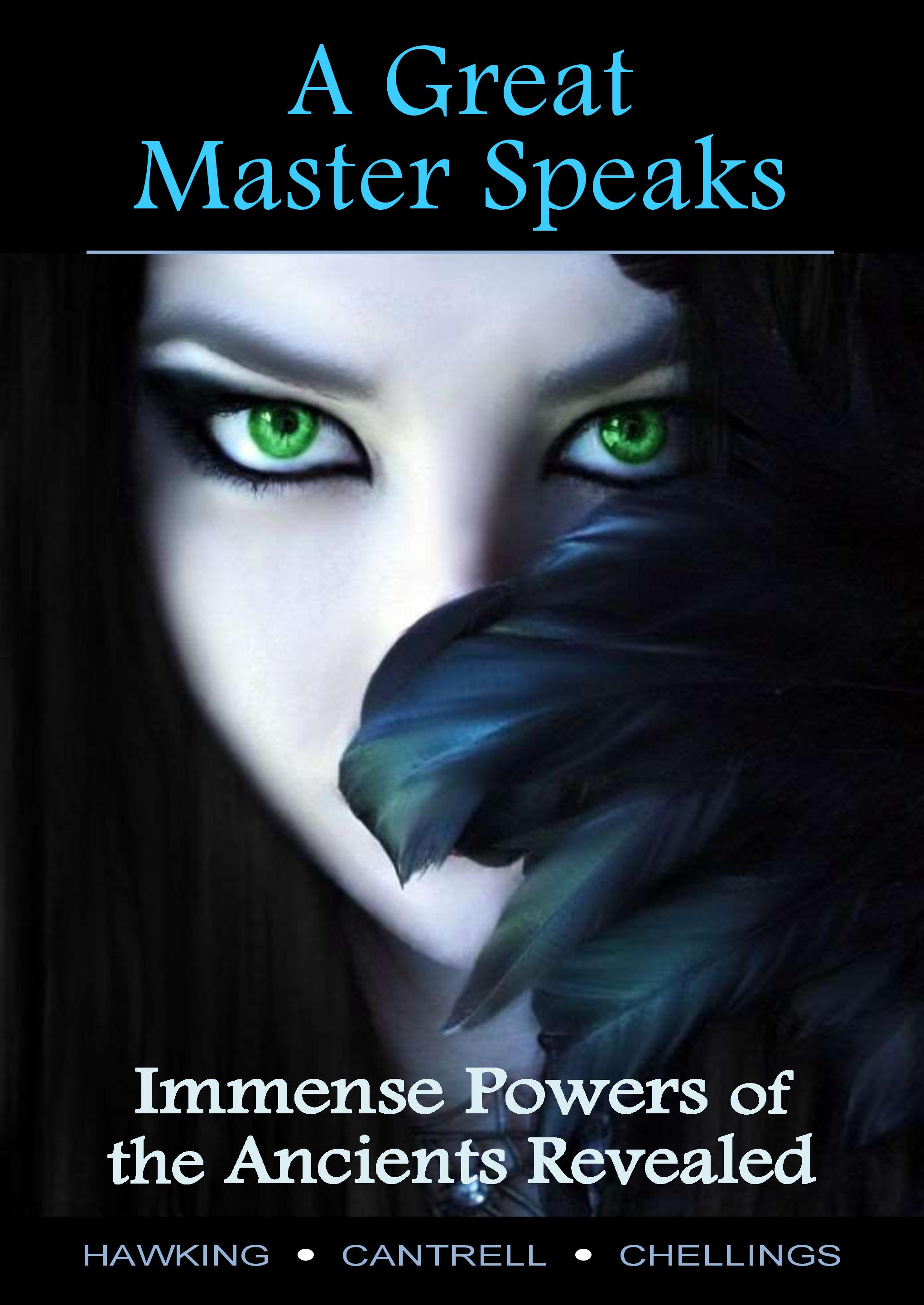
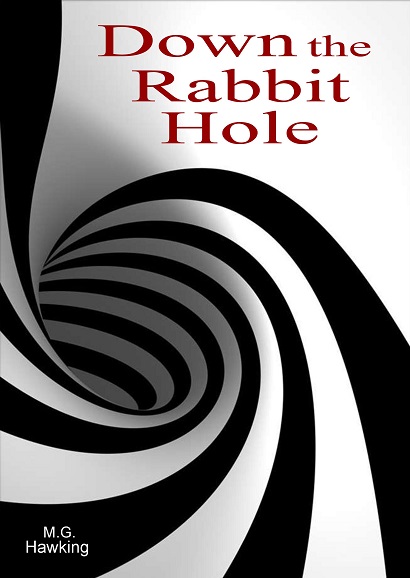
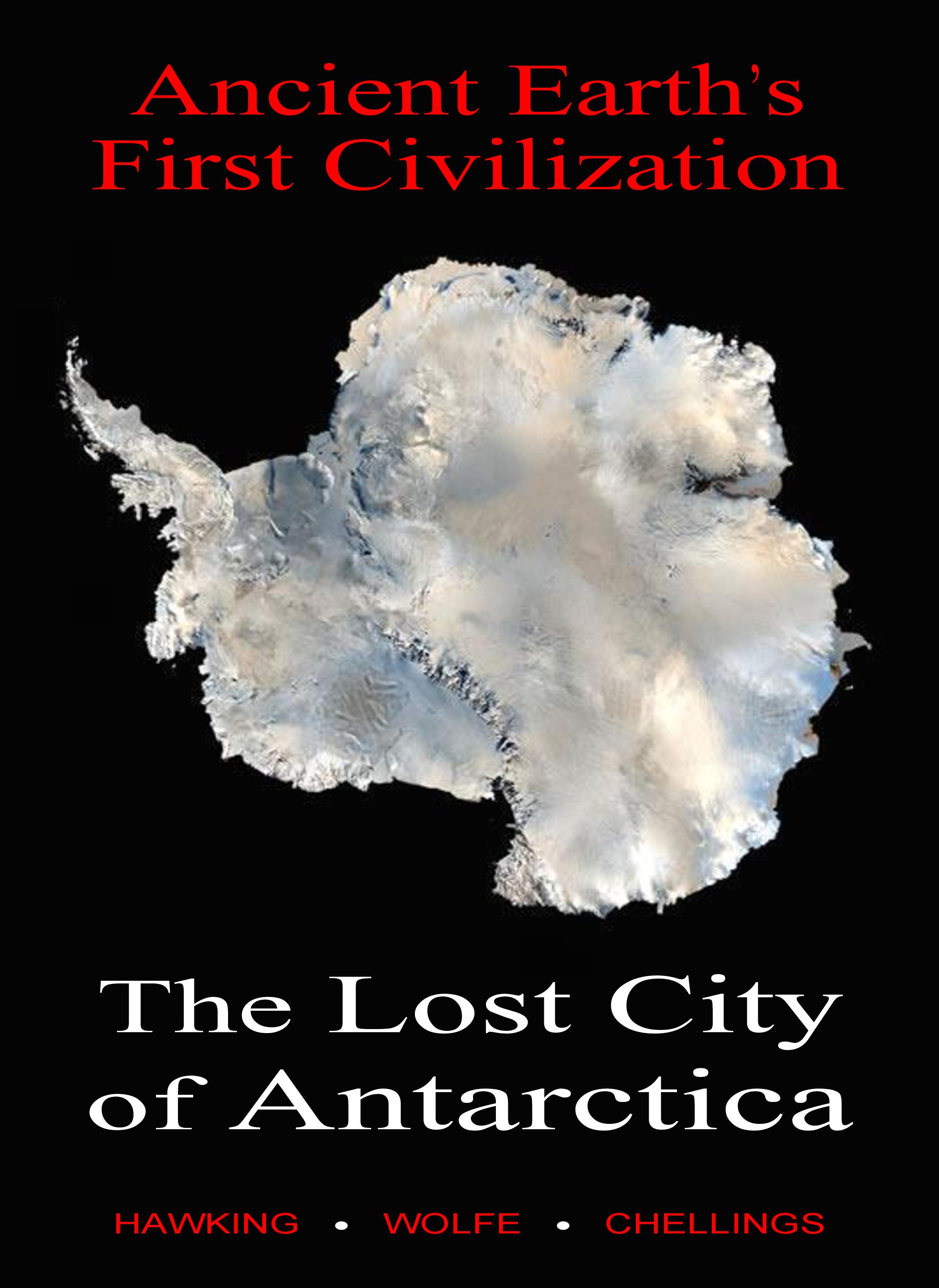
 Examination of Critical Theory - Background & Analysis, by Jenna Wolfe Ph.D.
Examination of Critical Theory - Background & Analysis, by Jenna Wolfe Ph.D. Specific Traits of Critical Race Theory, by Heather: How
is critical race theory distinct from other extreme ideologies? The
notoriously slippery ideology of critical race theory contains many
traits which can be found in any radical ideology. However,
philosophers, sociologists and psychologists say several traits offer
insights with respect to the distinct, specific characteristics of critical race theory.
Specific Traits of Critical Race Theory, by Heather: How
is critical race theory distinct from other extreme ideologies? The
notoriously slippery ideology of critical race theory contains many
traits which can be found in any radical ideology. However,
philosophers, sociologists and psychologists say several traits offer
insights with respect to the distinct, specific characteristics of critical race theory. The Deadliest Propaganda, by Kimberly:
When the month of September comes around, we remember a somber day, September 11, 2001, when radical Islamic
terrorists attacked the U.S. in horrific acts of evil that slaughtered
thousands of innocent American citizens, a result of the terrorist's
primitive hatred and truly barbaric ideology.
The Deadliest Propaganda, by Kimberly:
When the month of September comes around, we remember a somber day, September 11, 2001, when radical Islamic
terrorists attacked the U.S. in horrific acts of evil that slaughtered
thousands of innocent American citizens, a result of the terrorist's
primitive hatred and truly barbaric ideology.